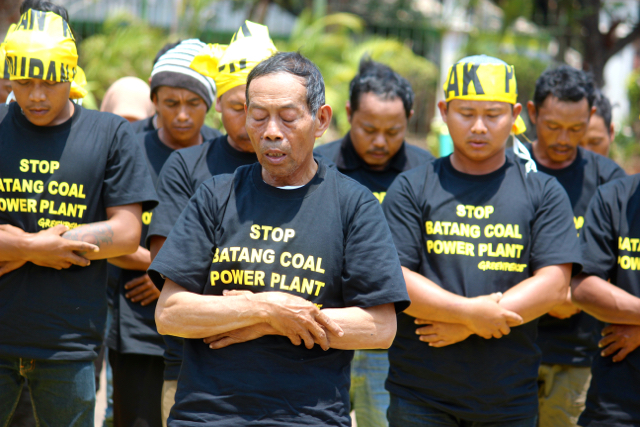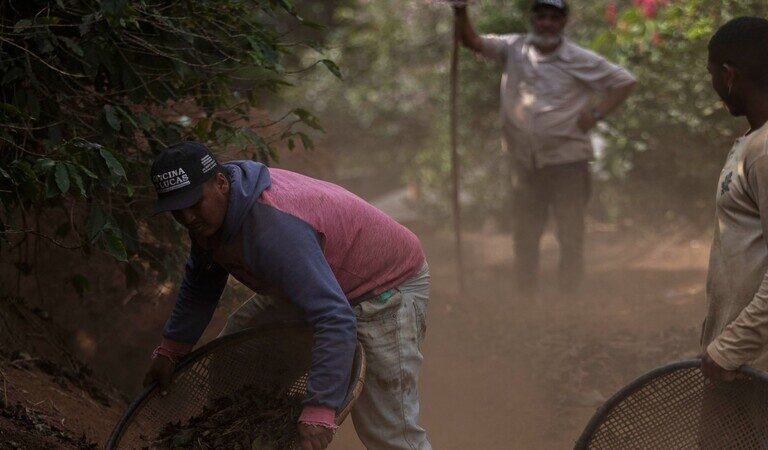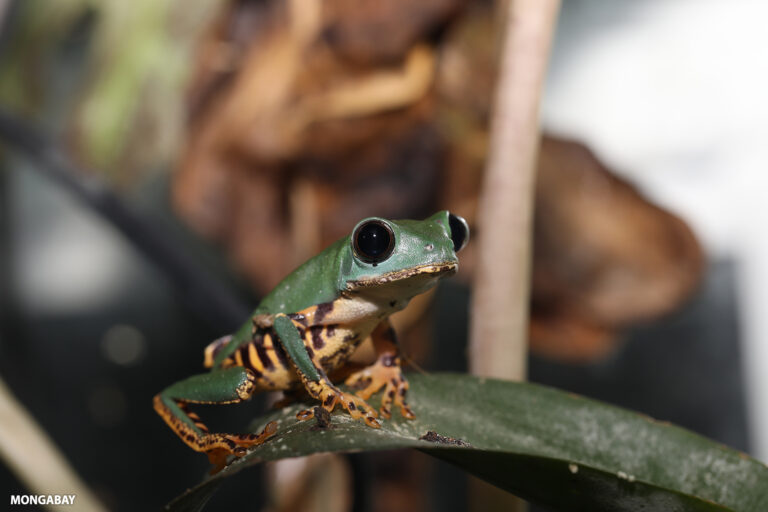- More than 2,000 terrestrial vertebrate species face a high risk of extinction from natural hazards, including hurricanes, earthquakes, volcanic eruptions and tsunamis, according to a first-of-its-kind study.
- Nearly 70% of the high-risk species live exclusively on islands, highlighting the particular vulnerability of island ecosystems.
- Only 15% of high-risk species have specific conservation plans in place, while approximately 30% have their entire known range outside protected areas.
- The study calls for increased investment in habitat protection, restoration, captive-breeding programs and species translocation to help vulnerable species survive in an era of intensifying natural hazards.
In the aftermath of Hurricane Maria’s assault on the Caribbean island of Dominica in 2017, researchers made a heartbreaking discovery: dead and dying hummingbirds scattered across the forest floor. Among them were purple-throated caribs (Eulampis jugularis), the specialized pollinators of the island’s Heliconia plants. This single storm threatened an evolutionary partnership millions of years in the making, killing three-quarters of the hummingbird population and leaving their flowering partners without their primary pollinators.
The disaster on Dominica exemplifies a threat that scientists are only beginning to understand: how natural disasters can drive vulnerable species toward extinction.
A study identified 2,001 species (834 reptiles, 617 amphibians, 302 birds and 248 mammals) that have at least 25% of their habitat in areas experiencing high impact from hurricanes, earthquakes, volcanic eruptions and tsunamis.
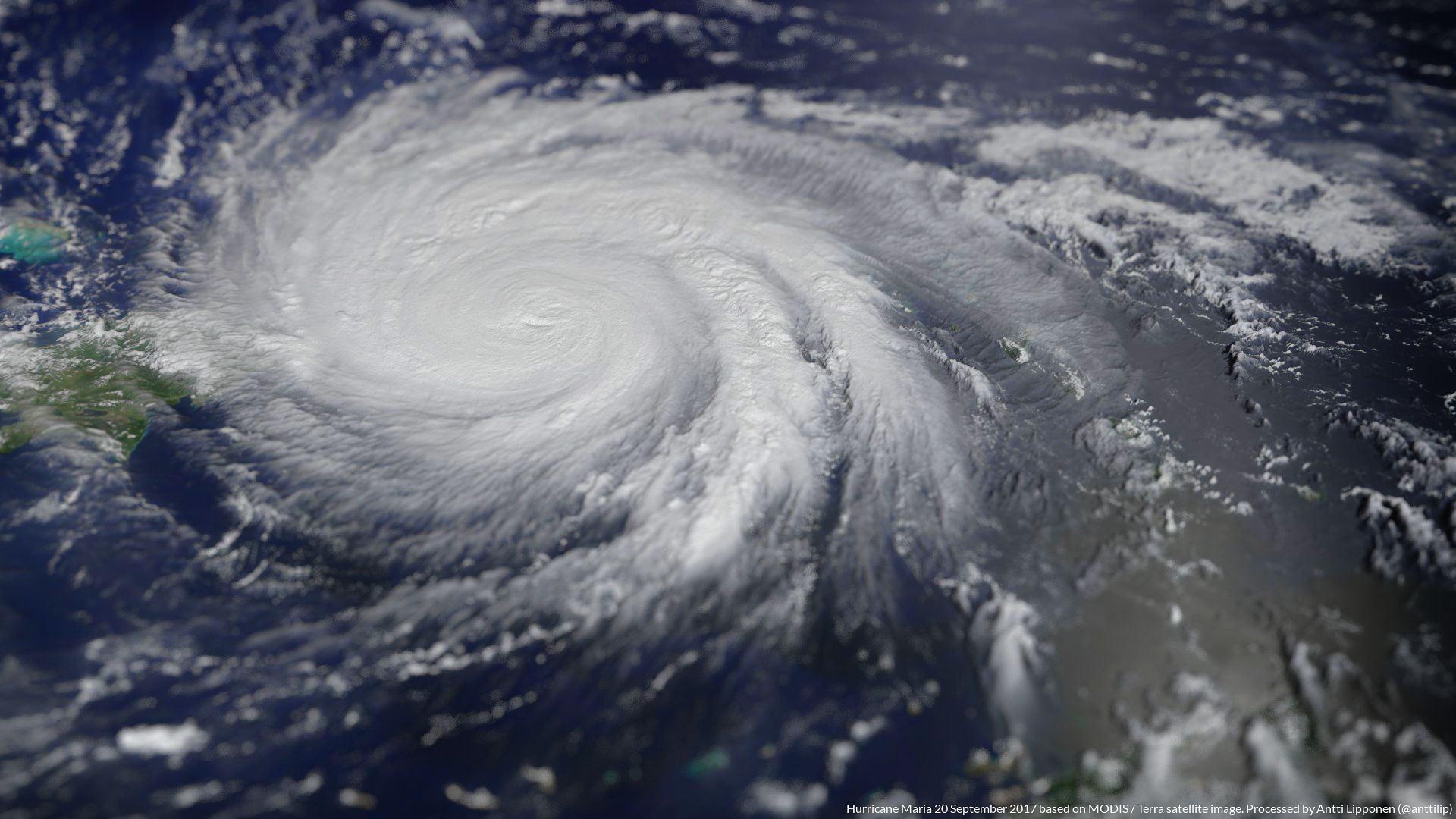
“This is the first attempt to provide a global map of species at risk of extinction due to natural hazards,” lead author Fernando Gonçalves, a postdoctoral researcher at the University of Zurich, told Mongabay.
The study analyzed approximately 50 years of historical data on these four kinds of natural hazards. Hurricanes pose the greatest threat, affecting 983 of the high-risk species, followed by earthquakes (868 species), tsunamis (272 species) and volcanic eruptions (171 species).
The highest concentrations of at-risk species were found along the Pacific Ring of Fire, a zone of high seismic activity around the edges of the Pacific Ocean. Hurricane-prone species were mostly concentrated in the Caribbean Sea, the Gulf of Mexico and the northwestern Pacific Ocean.
“By overlapping the occurrence of four types of natural hazards with species that have limited distributions or occur in small numbers, we were able to identify which species may be more susceptible to these threats,” said Harith Farooq, a lead author of the study from University of Copenhagen, Denmark.
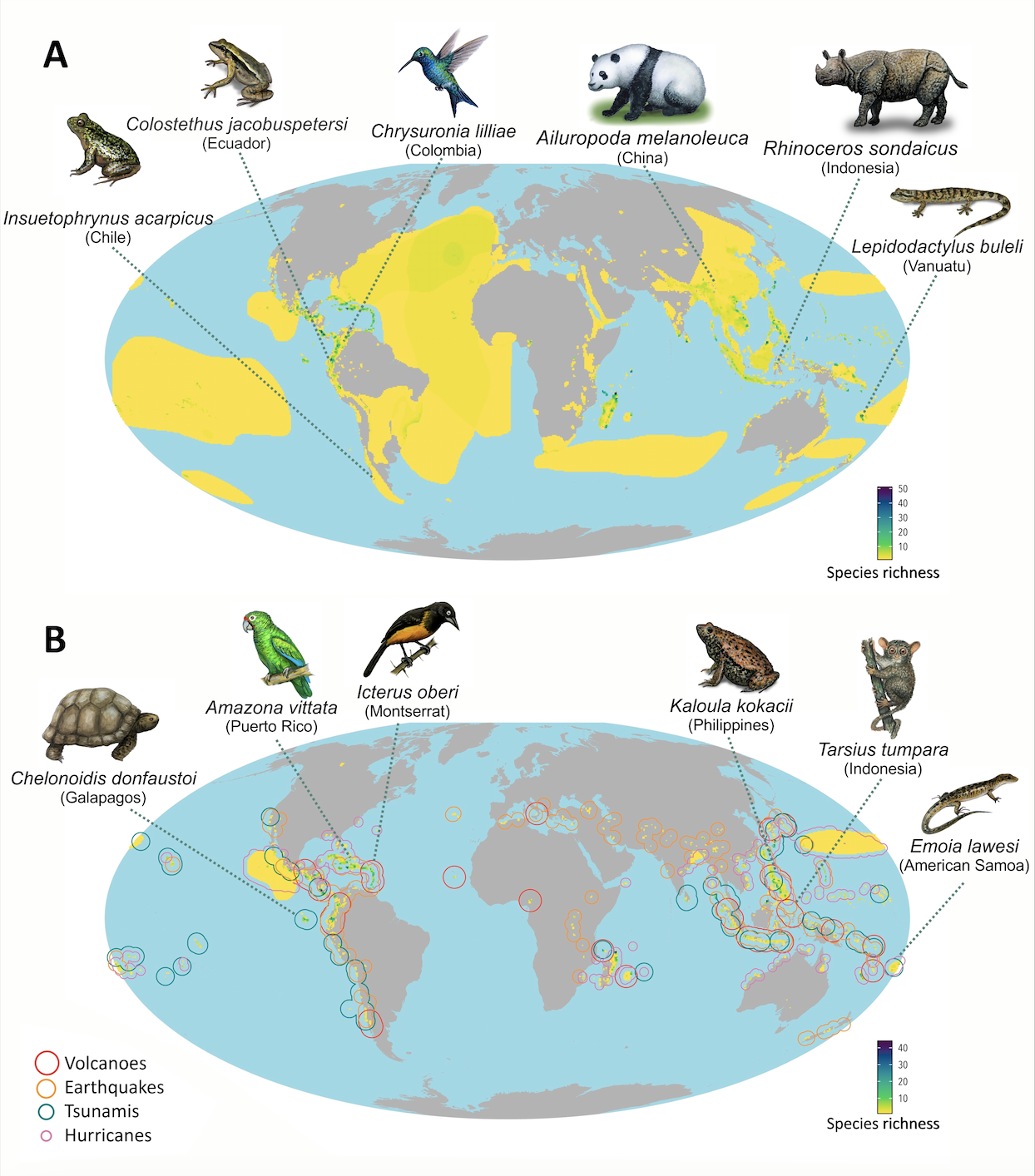
Overall, nearly 70% of the high-risk species live exclusively on islands. Although species endemic to islands have mostly evolved to withstand natural hazards, the researchers warn that these adaptations may not be sufficient when natural hazards combine with human-caused threats.
The research team examined 34,035 terrestrial vertebrate species worldwide, focusing on those with small populations (fewer than 1,100 mature individuals) or that live in restricted ranges (less than 2,500 square kilometers, or 965 square miles). Of these, 42% overlap with regions where major natural hazards have occurred in the past five decades.
“Half of these species are what we qualify as in ‘high risk’ of extinction due to natural hazards, and the majority of these are found in the tropics and especially on tropical islands, which have already experienced many extinctions since the colonization by humans,” Jonas Geldmann and Bo Dalsgaard, senior authors of the study from the University of Copenhagen, Denmark, said in a statement.
Climate change is expected to increase both the frequency and intensity of hurricanes, potentially overwhelming species’ natural resilience mechanisms, Gonçalves said. “The problem is going to be this combination of natural hazards and anthropogenic hazards such as deforestation.”
For example, Hurricane Maria in 2017 likely killed 239 of the remaining 250 critically endangered imperial amazon parrots (Amazona imperialis) on Dominica. Before the storm, the population was already on the verge of extinction due to habitat loss.
“Catastrophic natural hazards are rare and often unpredictable in their location and severity,” Thomas E. Lacher Jr., an emeritus professor at Texas A&M University who was not involved in the study, told Mongabay by email. “When they are severe, their impact on rare species, particularly on restricted populations, can be extirpation or extinction level events.”

Perhaps most concerning, Gonçalves said, is that only 15% of high-risk species have specific conservation plans in place, while approximately 30% have their entire known range outside protected areas.
The study highlights successful conservation interventions, such as those for the Puerto Rican parrot (Amazona vittata). The charismatic green bird was once nearly extinct due to hurricanes and human activities, but has been recovering through captive-breeding programs and the establishment of multiple wild populations across Puerto Rico.
The study calls for increased investment in habitat protection, restoration, captive-breeding programs and species translocation to help vulnerable species survive in an era of intensifying natural hazards.
“Translocating species to other suitable habitats is a practical conservation strategy, and ithas been successfully implemented in several cases,” Gonçalves said, citing the cases of the golden lion tamarin in Brazil, the kakapo in New Zealand, Mallorcan midwife toad, Aldabra giant tortoise in Seychelles and Fiji’s crested iguana. “However, it’s not an easy task. It involves significant planning, resources, and long-term monitoring.”

However, the work of saving each species is worthwhile, said Mauro Galetti a co-author of the study from São Paulo State University, Brazil, “We’re not just losing one species; we’re losing a multitude of ecosystem functions that these species provide.”
Lacher emphasized that islands should be a high priority for conservation action, noting that many are in hurricane-prone zones or are archipelagos of volcanic origin. “In these cases,” he said, “the maintenance of small captive breeding populations for things like endemic Caribbean parrots or threatened amphibian species is a wise investment.”
Gonçalves said he and his colleagues are now conducting long-term studies across 15 Caribbean islands to better understand how natural hazards affect not just individual species but entire ecosystems, including pollination and seed dispersal networks.
“One of the goals of creating the map and species list in our study was to highlight which species and regions need immediate attention,” Gonçalves said. “We’re already in contact with local authorities and NGOs in the Caribbean to initiate conservation programs aimed at stabilizing and rebuilding some of these populations.”
The researchers assert that understanding which species face the highest risks from natural hazards is crucial for prioritizing conservation efforts and preventing extinctions.
“Our study provides important information regarding the species at risk due to natural hazards and can help guide conservation attention and efforts to safeguard their survival,” the authors concluded.
Banner image of Purple-throated Carib (Eulampis jugularis) by Brian Sullivan eBird Checklist S43366676 Macaulay Library ML 89366011
Citation:
Gonçalves, F., Farooq, H., Harfoot, M., Pires, M. M., Villar, N., Sales, L., … Galetti, M. (2024). A global map of species at risk of extinction due to natural hazards. Proceedings of the National Academy of Sciences, 121(26), e2321068121. doi:10.1073/pnas.2321068121
Creating a high-tech island to save one of the world’s rarest birds
How Brazil is working to save the rare lion tamarins of the Atlantic Forest
FEEDBACK: Use this form to send a message directly to the author of this post. If you want to post a public comment, you can do that at the bottom of the page.







